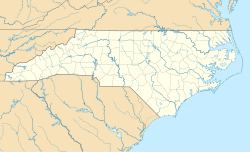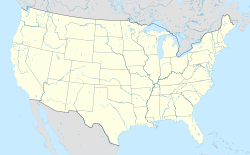Forest Hills Historic District | |
 Houses on Hermitage Court | |
| Location | Roughly bounded by Kent St., Bivins St., Wells St., American Tobacco Trail, Forestwood Dr. and Beverly Dr., Durham, North Carolina |
|---|---|
| Coordinates | 35°58′55″N78°54′53″W / 35.98194°N 78.91472°W |
| Area | 245 acres (99 ha) |
| Built | 1923 |
| Architect | George Watts Carr, et al. |
| Architectural style | Bungalow/craftsman, Colonial Revival |
| MPS | Durham MRA |
| NRHP reference No. | 05001476 [1] |
| Added to NRHP | December 28, 2005 |
Forest Hills Historic District is a national historic district located at Durham, Durham County, North Carolina. The district encompasses 312 contributing buildings, 3 contributing sites, and 4 contributing structures in a predominantly residential section of Durham that was the city's first automobile suburb. The buildings primarily date between about 1923 and 1955 and include notable examples of Colonial Revival and Bungalow / American Craftsman architecture. Notable contributing resources include Forest Hills Park, the subdivision plan, the original campus of Durham Academy, and the separately listed Mary Duke Biddle Estate. [2]
Contents
It was listed on the National Register of Historic Places in 2005. [1]
On December 9, 2001, Nortel executive Kathleen Peterson was reportedly murdered by her husband, the writer Michael Peterson, in their mansion in Forest Hills. [3]



